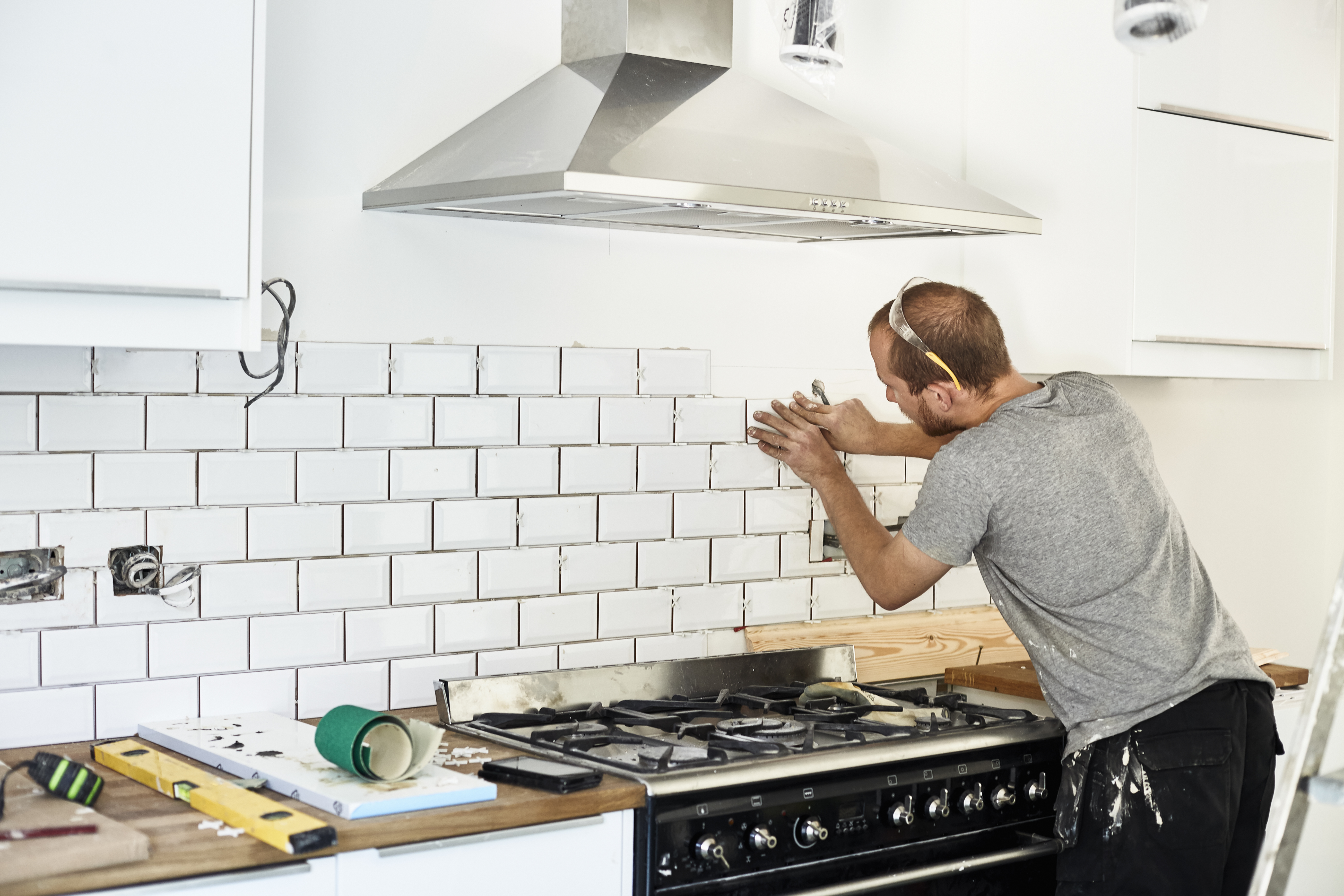Converting a basement into an apartment: a step-by-step guide to get you started
Want to earn money with a basement rental, or perhaps house a relative? Here’s everything you need to know


Do you have an empty basement doing nothing but storing Christmas decorations and boxes of your kid’s outgrown clothes? Now’s the best time to convert it into a rental for extra income.
Since 2008, Airbnb has transformed the short-term rental industry. At a time when hotels were struggling to stay open, this online reservation platform covered the globe with places to stay. And, according to iProperty Management, in 2018 women in the United States made $4 billion hosting on the site with an average nightly rate of $185.
Maybe tracking the comings and goings of travelers sounds like too much work and you’d rather rent for the long term. Even so, you’ll make a better return for your investment than the average homeowner who converts their basement into a game room.
Perhaps investment isn't your motivation, and you simply want to create a space for a relative to live or for friends to visit when they stay. Regardless of the reason you want to undergo a basement renovation, you'll want to make sure you do things the right way.
Here, we've listed out six important steps to converting your basement into an apartment or rental unit.
First and foremost: Is it legal to convert your basement into an apartment?
Before swooning over paint colors and flooring samples, check with your local zoning department to see if renting a basement apartment in your area is allowed. If so, consult with the building official to make sure the design you have in mind meets building codes and zoning requirements. Building and zoning departments may regulate, among other things, the number of tenants, the number of points of egress (i.e. exits), rooms you’re required to include, and parking availability.
Inspect the space
If you get the go-ahead from your local officials, it’s time to inspect the space. Use their feedback as a checklist of what to look for in your space. A few common things include:
Get small space home decor ideas, celeb inspiration, DIY tips and more, straight to your inbox!
- Points of egress—Make sure your windows are the right size to qualify as points of egress and you have the required total number of exits for your tenants.
- Headroom—Does your ceiling height meet the residential building code for your area? If not, you may have to consider digging down or raising your home to create more space.
- Dampness—Measure the relative humidity in your basement using a hygrometer. A comfortable home has a relative humidity level between 30-50 percent.
- Mold—To avoid personal exposure, consider hiring a professional mold remediation specialist to inspect and remove mold from your basement.
- Damaged wood—Excessive moisture in a basement causes rot damage. To check for rot or insect damage, use an awl to probe the floor joists, sill plate, and wooden window frames.
- Air quality—If your home’s fuel-burning HVAC system resides in the basement, have a professional test the air quality to make sure the system is ventilating properly. If you haven’t tested for radon, now’s the time to do that as well. Most big box stores sell radon detector kits or, for a more accurate report, hire a pro to do this for you. Once you get the “all-clear,” install a carbon monoxide detector.
Set your budget
How much money do you want to spend on this basement conversion? For the purpose of a rental, you obviously want to make money on the deal. And, if the basement apartment is for your own use, a nice ROI when if and when you sell your home wouldn’t hurt either.
According to Remodeling magazine’s Cost vs. Value Report 2017, a midrange basement remodel brings a 70 percent ROI for a national average investment of $71,115. (2017 is the most recent year Remodeling included basement remodels in their annual survey.) But if you plan to rent your newly renovated space, the rental income can help you recoup your total investment.
If you rent the space to a full-time tenant for $1000 per month, after 10 years you would make $120,000, a 1.7 percent return of the average cost. That’s almost doubling your money. But if you rent the space through a short-term rental platform 150 nights a year and charge an average of $185 per night, in the same 10 years’ time you will make $277,550, or almost four times the amount of your investment.
The fun part—designing the space
You’ve done the legwork; now it’s time to peruse those Pinterest boards. Here are a few tips for layout that’ll make your newly renovated space a place guests will return to again and again.
- Privacy—Privacy is important for both you and your tenants. Create a separate, exterior entrance with adequate parking and lighting. And include extra insulation between floors and sound-buffering materials, like carpet, in your design.
- Light—Because a basement is below grade, you want to capture all available light. Locate your main living area where you have the greatest light source, like the walk-out door. Enlarge the door, if possible, and all the windows and window wells. Choose light and cool colors of paint and flooring to make rooms look larger and reflect any natural light. Also, install adequate lighting throughout.
- Dark—Capitalize on a dark corner by using it for your utility room, bathroom, closet and storage space, or the TV-viewing area.
- Bedrooms—Since bedrooms require a point of egress, place them along the perimeter where the windows are located.
- Open floor plan—To encourage social activities and make the space feel larger, include an open floor plan with a kitchen island. You can enlarge the space, visually, by adding mirrors and visually raising the ceiling. Achieve the illusion of a higher ceiling with floor-length drapery panels, floor to ceiling bookshelves, vertical elements on the walls, or painting the ceiling with a dark color.
- Furnishings—If your basement remodel will be a short-term rental, you’ll need to furnish it. Primarily, your guests want a place to sleep, so don’t skimp on the mattresses. Otherwise, think comfort and durability. According to iProperty Management, 43 percent of Airbnb guests rate functionality as their top amenity. That’s a great reason to provide a desk for remote workers with a comfortable chair and a WIFI connection. Other functional items to consider include a fully-loaded kitchen, washer and dryer, and pull out sofa.
- Finishes—If you're going for a short-term rental property, creating a home-like, comfortable feeling will encourage guests to return. Achieve a high level of comfort by choosing carpet over tile or vinyl flooring. Save the tile for the bathroom and kitchen areas. Take the comfort level up a notch with radiant floor heating and strategically placed table lamps with soft light bulbs.
The construction phase
Finding the right building contractor is as easy as asking friends. If you know someone who’s had similar work done in the past, ask them who did it. If you can’t get referrals from your community, check reputable sites like HomeAdvisor, the National Association of the Remodeling Industry (NARI), or our Find a Builder Guide. Read reviews and testimonials and narrow it down to one or two to interview. Then, ask to see their current licenses and certificates of insurance.
When interviewing contractors, there are a few things you want to make sure they include in their estimate.
- Installing a backup sump pump in case your primary one fails. A sump pump removes water from below-grade quarters that leaks in during an appliance failure or flood.
- Insulating all pipes before boxing them in.
- Using moisture resistant materials.
The reality of renting
Honestly, living with someone else in your basement can be like living in an apartment. No matter how much insulation you install, noises and smells will pass from floor to floor. Before hanging the “For Rent” sign in the window, make sure you’re ready for the experience, especially if renting full-time.
Are you prepared to lose the space? Maybe you only used it for storage and laundry but once it’s gone, it’s gone. Will you be moving your laundry facilities upstairs? Will you need to purchase a backyard shed or rent an off-site storage space? This is a minor sacrifice compared to the ability to pay off your mortgage early with the income but are you ready for it?
If you’re planning on a short-term rental, learn the ropes of dealing with a reservation platform like Airbnb or Tripping. Carefully read their terms of service and speak with other hosts about their experiences.
Long-term renters come with their own set of concerns. You want to know you can trust the person living one floor below with only a door between you and them. Without question, before renting your basement to anyone, perform a credit check, background check, and ask for both professional and personal references.
Carol J. Alexander writes website copy, blog posts, and feature articles on home remodeling and construction topics from her home in the Shenandoah Valley of Virginia. In addition to Real Homes, notable clients include, This Old House, Family Handyman, and Florida Roofing magazine.
